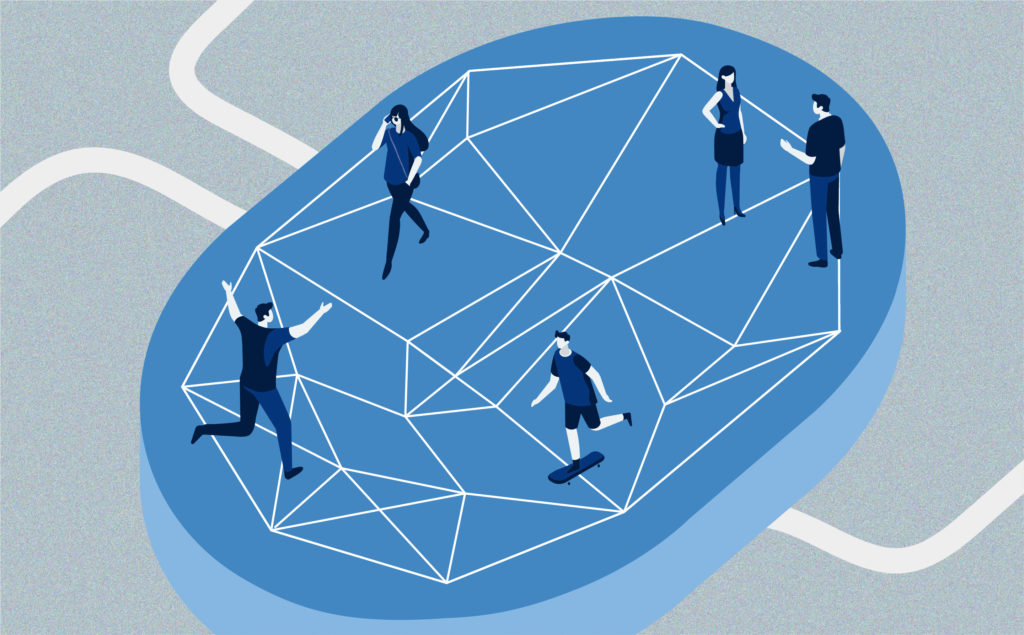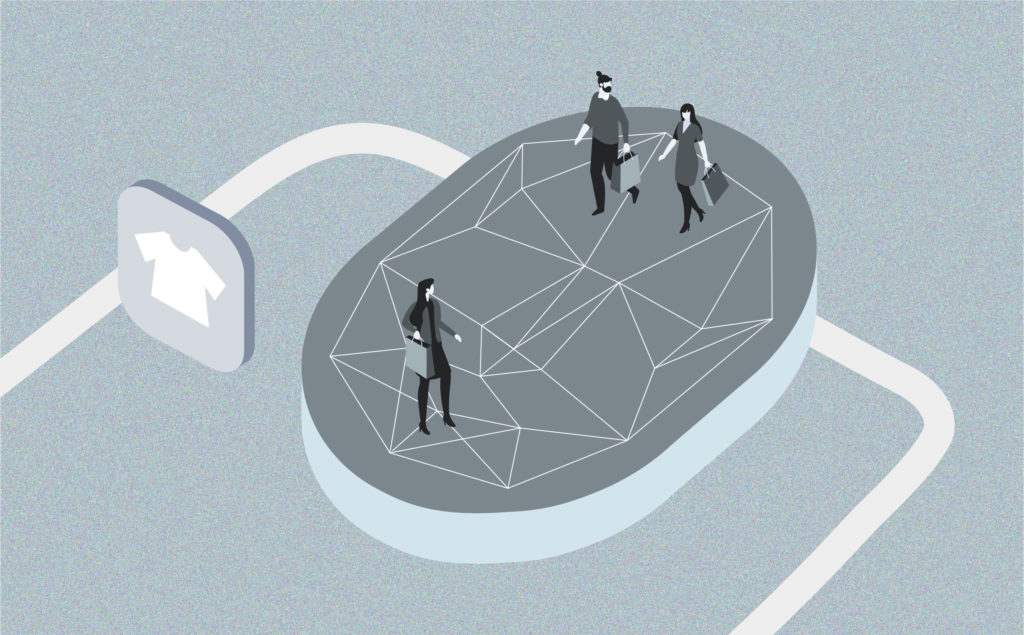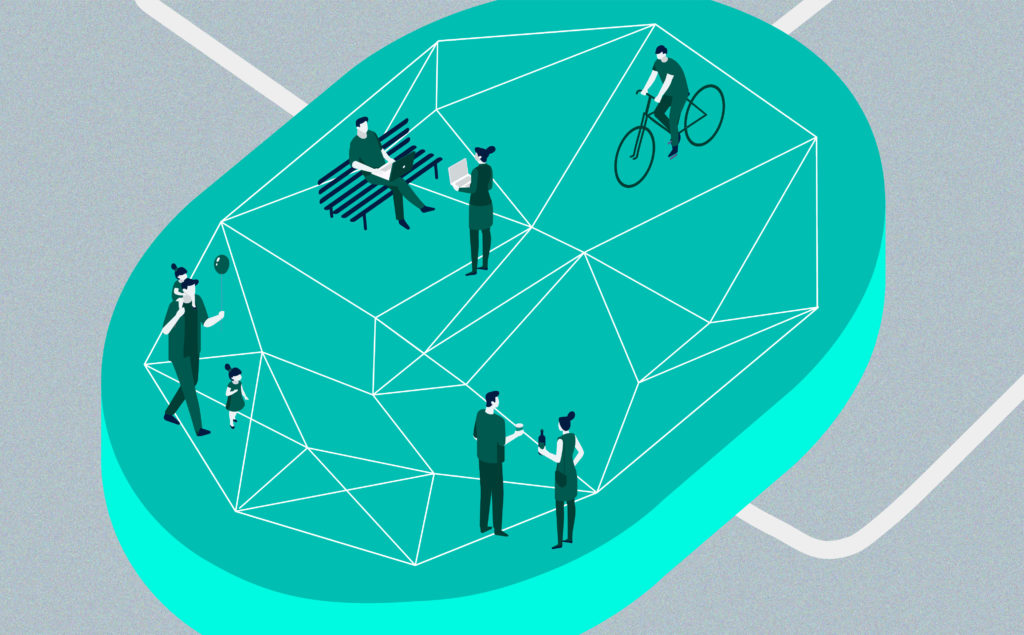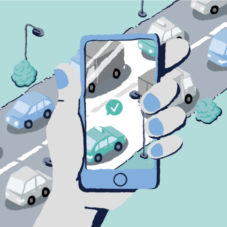Digital anthropologist Giles Crouch: “We use verifiable identities in the real world, it should be the same in the digital one.”
Identity is a fuzzy thing. It is constantly changing as we grow up: child, student, parent, worker… each time we join different social groups in our lives, we find ourselves with a new kind of identity. And with technology, identity is no longer restricted to the offline world. So what does it mean, to have a digital identity? And why do we need to have a system to verify it?
We talked to digital anthropologist Giles Crouch about how culture shapes our personal identities, why he sees digital identity verification as a must in a world filled with technology, the somewhat unexpected connection between culture and our use of sharing economy services, and why he calls our world “phygital”.
Giles Crouch

Giles Crouch is a digital anthropologist who applies his knowledge of cultural anthropology to our digital world and the technologies shaping our work, lives and societies. For over 25 years he has helped companies create and launch human-centric technologies and advised global organisations on public and foreign policy regarding technologies. He’s led research for global brands including technology companies, the United Nations, Medicines Sans Frontiers, and others.
Identity vs. digital identity
What is this thing we call identity? And how has our perception of it changed throughout history?
Regarding the first question, I’m sorry, but asking an anthropologist you won’t get a definitive answer. We have personal identities – what we call personality. But in general, the perception of identity is shaped by the social groups we live in: we can call it community identity. And of course, it has changed throughout history.
I can see three major shifts.

In what we would call prehistory – the hunter-gatherer era – people lived in very small groups, they roamed within a particular region or area: identity was shaped by the community they grew up in. As we moved into the agricultural phase and feudalism, identity was shaped by larger areas, but still very much community-based. That started to change as we entered capitalism: the printing press allowed us to transfer knowledge more quickly and advances in transport technology made our journeys much faster. Here we began to identify not just as a small community but in terms of nation-states.
We created national borders and then bigger borders: suddenly identities were no longer shaped just by small, localised communities. We started telling stories about our nations. And stories play a really important role in how we form identity.
“In the digital age, we’ve collapsed time and space. This means that we can share our cultural values, norms and traditions in ways that we never could before, and this informs and changes our sense of identity.”
This suggests that technology has also played a role in transforming identity. What happened to the idea of identity when the first digital computers came out, and now that we are so globally connected?
Our identities began to take on a different meaning. Before the digital revolution, we had time and space between cultural groups; cultural shifts in identity happened over time.
In the digital age, we’ve collapsed time and space. This means that we can share our cultural values, norms and traditions in ways that we never could before, and this informs and changes our sense of identity. We no longer identify purely within the confines of the community we grow up with.
Do you see a difference between identity per se and a digital identity?
We can have one identity in the real world and a completely different identity in the digital world. In fact, our sense of identity changes over time throughout our lives, and it changes in the digital world too. How we see ourselves in a digital world today will change over time based on the activities we participate in within digital communities.

Play, for example, is an important part of how we find our identity over time, and that happens a lot in the digital world: I might be leading a clan in World of Warcraft or interacting with my neighbours in The Sims Online. Sometimes we create a sense of who we are online as if we’re cyborgs, but that doesn’t necessarily mean we do the same thing in real life.
But in the digital world, there’s also a different kind of identity – in the sense of what computer algorithms define as our identity.
Tell us a little more about this last type of digital identity, defined by algorithms. Does it have to do with social media platforms and the digital footprints we leave behind us?
Social media companies and data analytics companies create a consumer identity: they build a profile based on our digital footprint, i.e. the activities we engage in online. It’s an identity that we don’t even understand or relate to, because we don’t know exactly what they’re recording about us and we don’t fully understand the mechanism that forms our identity there.
In digital identities defined by algorithms, everything is based on the user’s behaviour. But these behaviours are still usually based on our real-world cultural places of being. For example, if I was raised Canadian and I have all these Canadian values, I’m going to translate that into what I do online and how I present myself online.
That is why I think we are now living in what I call a phygital world: physical and digital coming together.
What happens if something goes wrong in the digital world and our identity there is compromised?
A fear for many today is identity theft, even if it’s only a “partial” identity theft such as the hacking or spoofing of a social media account. This can make people feel as if a part of their overall identity and their digital persona is taken from them, and the result is often less digital interaction than before.
Those who have suffered from being hacked may also start to not use online services at all. E.g. if someone is a prolific social media user and is active across platforms like Reddit, Discord or Facebook and they’re hacked, they may retreat socially for a period of time and alter the digital persona they had previously used when engaged in digital communities.
Also, there is another layer to this type of mistrust in the digital world, and that is when using services. For example, with sharing economy platforms like Airbnb or Uber, it can make it harder for those providing (and using) the services to trust who they are dealing with. The same goes for basically every other peer-to-peer platform too.
You have mentioned how culture shapes our identities in the real and digital worlds. Do you think that it also shapes the way we use different services? Talking about Uber and Airbnb, I am curious if the way our different identities are shaped has an effect on how we use these peer-to-peer platforms that rely purely on trust. E.g. will a user in Southeast Asia use a sharing economy service differently than a Canadian user?
Very much so! Type 1 cultures that are more individualistic will tend to make decisions based on their primary interests, and consider friends and family secondarily. Whereas a Type 2 culture that is more communal in nature (Asian, Nordic, and some European cultures like Spanish and Italian) will consider family and friends first in their decision-making processes.
While all of our identities are shaped primarily by the culture we are born and raised in, these may change if we, for example, move from our country of origin to another that has different cultural norms, customs and traditions. Our identity also changes as we age and move through different life phases. Changing our in-situ culture later in life changes our identity as well.
So this will impact how they use and think about sharing economy services: Type 1 will see them for personal benefit and Type 2 for communal benefits.
And this diversity in the real world also shapes our digital identity, right?
It’s important to remember that culture is mutable. We’re always changing our traditions, our customs, our norms. We try to cling to them as much as we can, but our cultural identity changes over time as societies change. We constantly incorporate new styles of music, fashion, architecture, etc.
These identities generally hold true to geographical areas where the cultures are, but when we’re online, they start to blend together. One example: There is a Scottish bagpipes and Indian music mashup that is beautiful to listen to. That would have been really hard to do in the pre-internet era, right?
In contrast, we do two things digitally. We are trying to experience other cultures, but we are also trying to protect our sense of identity based on the culture that we grew up in, that we live in, and that we have accepted.
Verified means safer
Do you think that a verified digital identity could change the way we behave in digital space?
Absolutely and I think this is a crucial issue for the future of human activity and participation in digital spaces. With the rise of AI agents, chatbots and AI-generated stuff, it’s going to become even more important. I really cannot see how we can advance our digital economies and social participation without a form of verifiable identity.

Without a verifiable digital identity, it will be increasingly difficult to address issues such as cybercrime, bullying, mis/disinformation, and so on. And it’s not just personal identity verification, but also entities such as news media, corporations and nonprofits.
We use verifiable identities in the real world all the time; passports, driving licences, birth certificates, etc. So there is no reason this should not be done in the digital world. It helps us structure and govern our societies in the real world and as the two worlds become more deeply intertwined, such identity systems are vital.
The digital identity you describe seems to be extraordinarily colourful and fluid. Does it not clash with digital identity verification, which is supposed to be quite rigorous?
Did you know that general identity has been fluid in societies for thousands of years? For example, the current form of gender identity – a very big topic – in Western societies is largely informed by Abrahamic religious views. If you look at North American Indians, they’ve always had this concept of two-spirit for gender-nonconforming people. And online communities today give people the opportunity to explore their gender identity.
“We can take out a lot of social constructs and other things until we get to the core: which is the need to confirm that we are human and unique.”
But when it comes to identity systems – how we recognise and verify identities in the digital world – we can take gender out. We can also take race out. They are unnecessary in terms of our digital identity systems. We can take out a lot of social constructs and other things until we get to the core: which is the need to confirm that we are human and unique.
All the other things that surround our identity, in terms of our personal identity and our community identity, are all driven by cultural influences. But if we look at digital identities in terms of verification systems, we can – and we absolutely should – create a system where we just say: this is a human being, and we can confirm the identity of this person in the digital space. That is all that matters.
Does that mean that digital identity can be more inclusive than an offline one?
This is a complex issue to address and carries much nuance. A digital identity is necessary as I’ve said above, but it also needs to give some degree of agency to an individual, such as if they do or don’t want to share their gender, ethnicity or race.
The upside to this is that, at the same time, a verified identity can give people agency to share what they want to be known. This brings into play greater privacy protections as well and would reduce the risk of identity theft and what information marketers can collect.
What about other marginalised groups, like older people or people who are less confident with technology?
I’m not sure about helping those who are less confident; trust is a component and if they’re not consuming or participating in digital content, they often tend to have a bias that’s difficult to overcome, and have made a conscious choice not to engage in digital worlds. For those who are older boomers, they’re the last generation that isn’t as tech-savvy, yet the 65+ market is one of the fastest-growing adopters of smartphones and tablets. They are also more likely to adopt a verifiable digital identity as they come from a sociocultural timeframe of accepting such systems.
The struggle for the adoption of digital identity systems, oddly enough, may come from those aged 35 and under. This relates to changes in current sociocultural systems and political divides we are seeing today.
Adapting both society and technology
How has trust changed in the digital world?
Our mechanisms of trust in the pre-digital era were largely based on physical contact. We travelled to different countries for trade or diplomatic purposes. We met in conference rooms. Trust was about looking into each other’s eyes.
When we moved into the digital age, we didn’t really build a system of trust. And now multimodal AI is affecting our centre of trust even more. How do we know what’s real? Or when there is a real person behind that identity?
Maybe that’s why we’re moving our social interaction from social media – which is instead becoming a broadcast entertainment channel – to direct messaging platforms such as WhatsApp, Telegram, Messenger. I have a better sense of who’s there. I have much better control over who I allow into the group. And it’s usually someone I trust, either because it’s a family member or a friend I’ve known for many years, or it’s people I’ve engaged with in social media groups over time. I have already established patterns of trust.
In this sense, biometric verification can play a different role in confirming who we are as individuals. It builds trust more quickly and can encourage us to share more online.
“Usually, technology comes in and changes us. Then eventually we turn back and say: now we’re going to adapt the technology, and make it fit in with our social norms and customs.”
Will we ever be able to adapt our patterns of trust to the new challenges?
Technology transforms our socio-cultural systems. That’s why we’re having this discussion about identity and the rules and regulations that need to happen around the digital space. And socio-cultural change takes a long time.
Usually, technology comes in and changes us. Then eventually we turn back and say: now we’re going to adapt the technology, and make it fit in with our social norms and customs.
We are in the middle of a chaotic, fascinating time. Innovation is forcing us to have an important discussion about identity and culture. It’s also asking us what role we want these technologies to play in our societies.
And ultimately we will adapt, and technology will adapt. We always have before. It just takes us time!
AUTHOR: Giovanni Blandino










